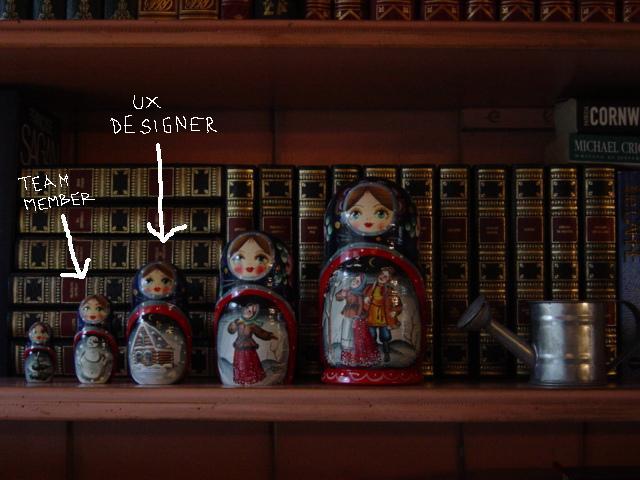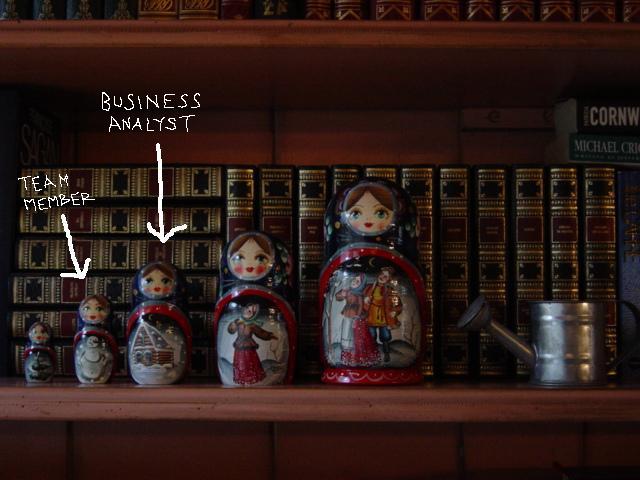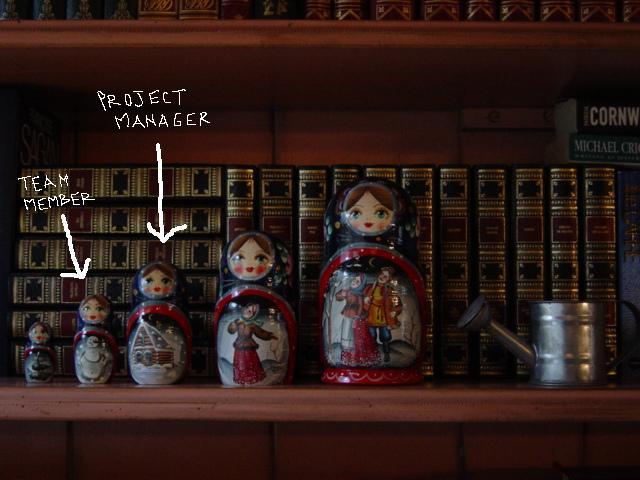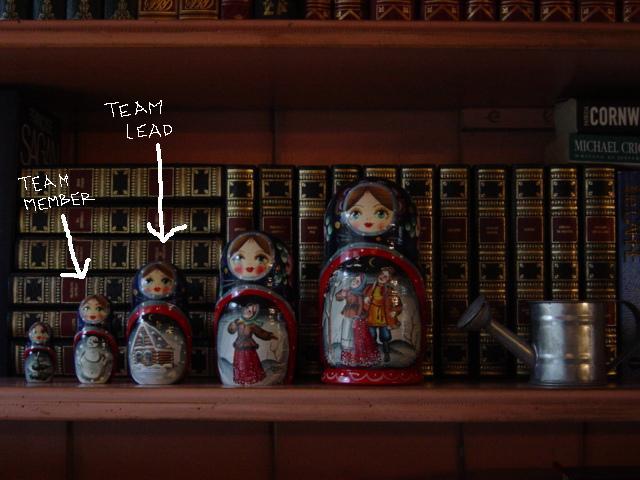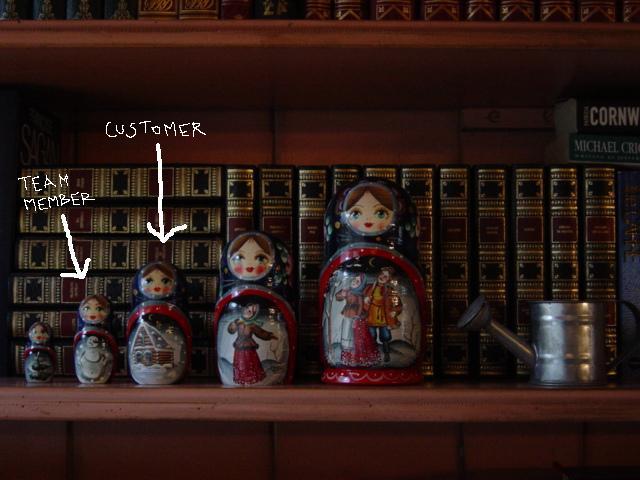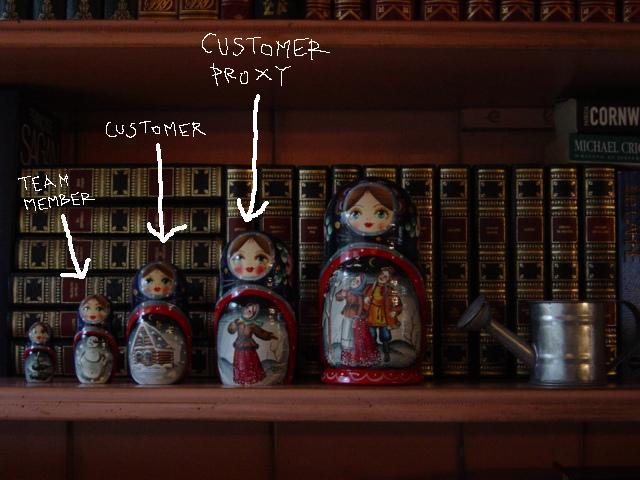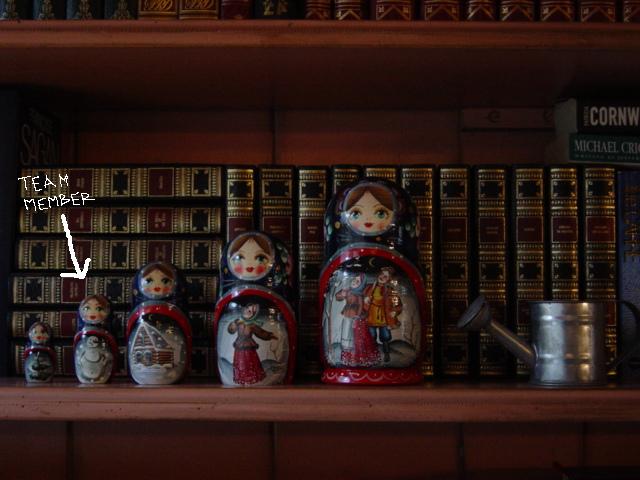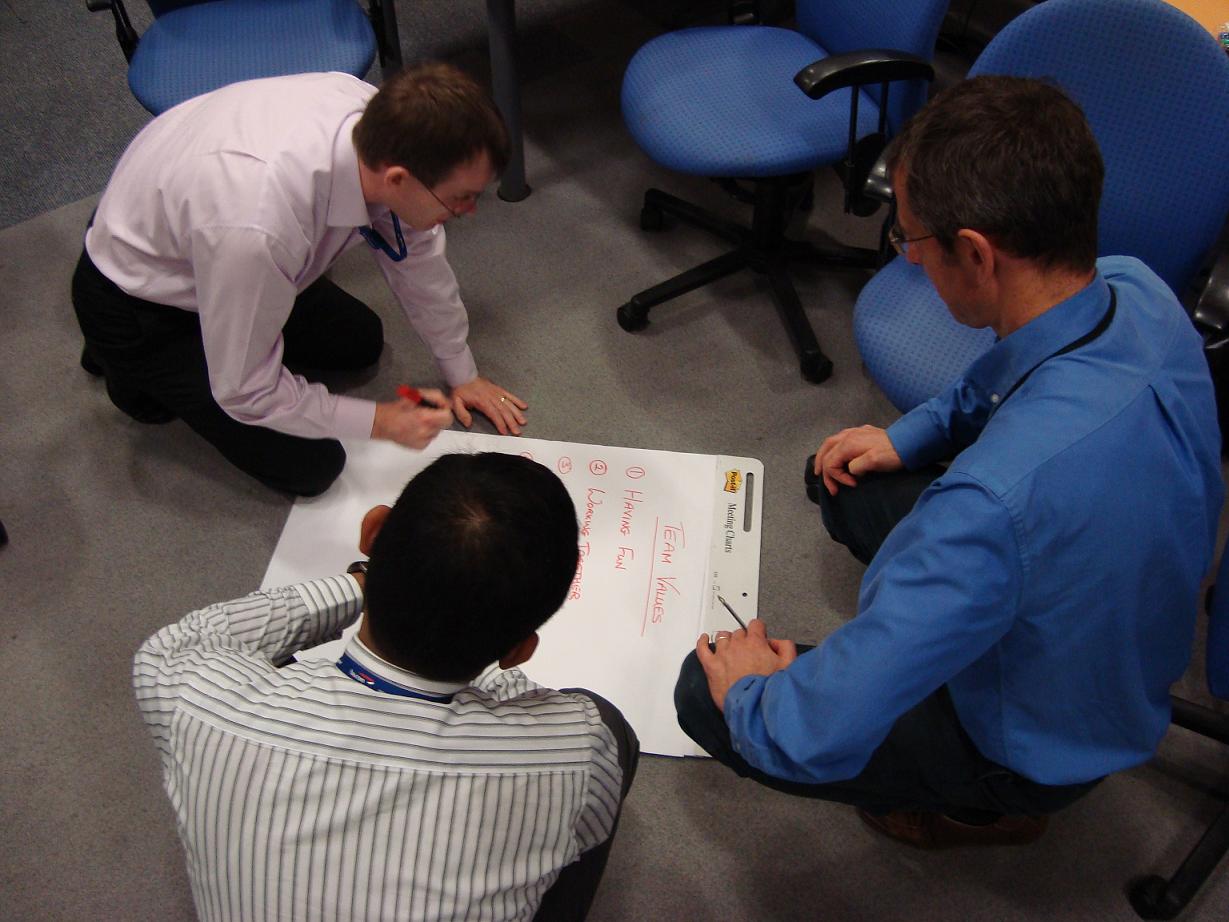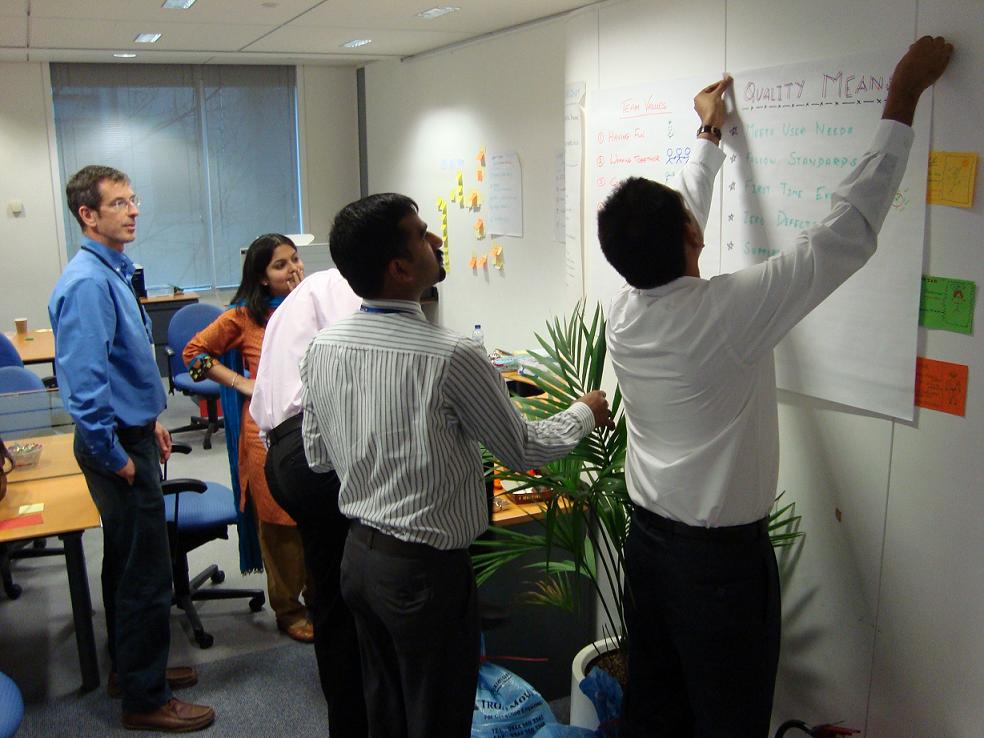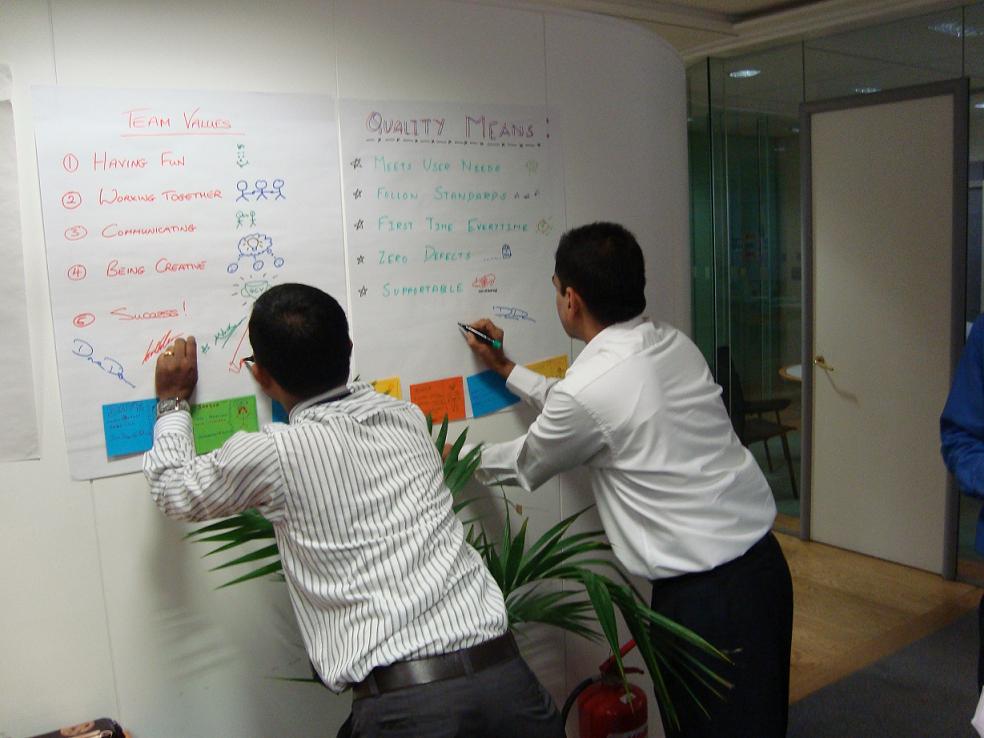
P.: Nine out of ten Agile Coaches I meet are those who live by the mantra of Do-As-I-Say-Not-As-I-Do.
TJ.: Go on.
P.: Some people say that the statistic concerns them.
TJ.: Why? Did you name names?
P.: No.
TJ.: Perhaps their response is out of guilt?
P.: No. They think that it’s better not to hire an Agile Coach since the chances of finding a good one are so slim.
TJ.: That’s a concern I share.
Make it worth more than words
Agile is many things. In summary:
- It’s a buzzword, a band wagon, a meal ticket.
- It’s a group of practices that enables people to deliver higher business value through better quality deliverables.
- It’s a fundamental mindset shift that effects everything you do based on values and principles.
The Lifecycle of a New Idea
The multitude of definitions is a sign of growth. It’s part of the evolutionary adoption of a new idea according to Everett Rogers’s Diffusion of Innovations theory, made better known by Geoffrey Moore’s Crossing the Chasm model.
The challenge for those with a real desire to understand and experience the benefits the Agile way of working is:
- See through the spin
- Distinguish those who have neither the experience nor the understanding of Agile from those who genuinely apply Agile Values and Principles to the way they work.
This challenge reminds me of the journey of the programming language Java. Cast your mind back to the Dotcom era. Back then, Java was the latest shiny thing and I remember meeting self-proclaimed Java gurus who had only ever created web pages out of HTML and perhaps dabbled in Javascript at best. The buzz, the buskers and the learners are part of the entourage of the growth of a new idea.
How to Hire a Good Agile Coach
I apply the same principles of hiring a team member/employee to hiring an Agile Coach. Here are some of the things I like to find out about them:
- What they value and why.
- Their knowledge and thoughts on the Agile Values, Principles and Practices.
- Their knowledge and experience of the Agile Delivery lifecycle and the effects of possible variables (such as time, cost and scope) on the Agile way of working.
- Examples of where, when, how and why they’ve used Agile or a different approach.
- How they use Agile for personal development.
- Why they’re an Agile Coach.
- Evidence of their professional experience (including online presence, references, recommendations) to determine their credibility.
- Would I want to work with them, day in day out? If ‘Yes’, why? If ‘No’, why not? Then I reflect on my responses to find out what they tell me about me.
My Principles on Hiring
- If in doubt, don’t hire.
- If you’re undecided, find other ways of gathering more information. Introduce them to the team over lunch. Or invite them for a day’s worth of work experience.
- Hire people who learn.
- Hire people you can learn from.
- Prefer team players over self-proclaimed leaders.
- Always get a second opinion because we all see the world in different ways. I find it useful to pair when interviewing.
- Make it a WIN-WIN opportunity for you, your company and the new hire.
